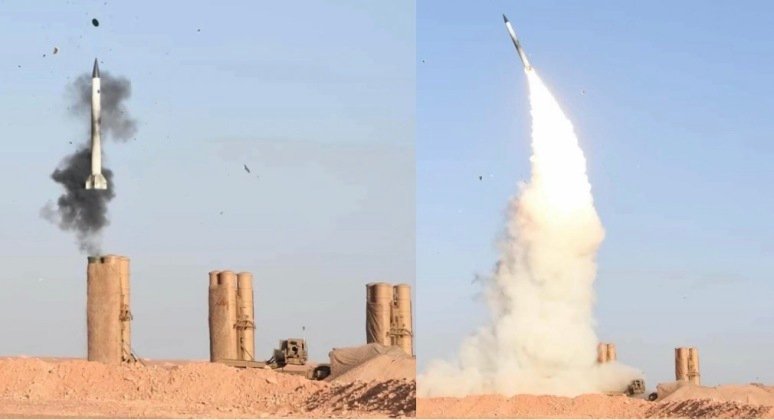<p >In the aftermath of limited <a href=" target="_blank">Israeli air strikes </a>on Iranian targets in the early hours of October 26, which saw fighters launch large numbers of ballistic missiles from outside Iran’s airspace, Iranian ground based air defence systems have alone <a href=" target="_blank">shouldered the responsibility</a> for intercepting incoming attacks. While Iran fields a number of indigenous and Soviet long range systems, by far the asset which had gained the most attention has been the Russian S-300PMU-2 system, a single regiment’s worth of which were delivered to the country in 2016. Deliveries included sixteen transporter erector launchers, 96L6E target-acquisition radars, 30N6E2 target-engagement radars and 64N6E2 battle management radars, and other supporting components. The S-300PMU-2 was first operationalised in 2004, and was initially built almost exclusively for export to China due to a lack of funding from the Russian Defence Ministry, before seeing exports to Algeria, Vietnam and Azerbaijan. The system provides multi-layered air defence with complementary long, medium and short ranged missile classes, and was designed with an emphasis on high mobility to maximise survivability.&nbsp;</p><p ><img src=" title="Surface to Air Missile Battery From Iranian S-300PMU-2 System"></p><p >A significant cause of uncertainty surrounding the capabilities of Iran’s S-300PMU-2 systems remains whether they have been equipped with 48N6DM surface to air missiles, which are reported to be compatible with an upgraded variant of the system and also serve as the primary long range armament of the <a href=" target="_blank">newer S-400 system</a>. These missiles have particularly advanced anti-missile capabilities due to their more advanced sensors and higher speeds exceeding Mach 14, allowing them to engage targets at very high supersonic speeds including hypersonic speeds exceeding Mach 8. China previously tested this Russian-supplied missile class to successful intercept targets travelling at speeds exceeding Mach 8 at 250 kilometre ranges – a performance which no Israeli air launched missiles, and very few air launched missiles in the world, can match. Iran was reported in 2020 to have&nbsp;<a href=" new missiles&nbsp;</a>for its S-300s, which were speculated to be 48N6DM missiles, although this remains unknown. Iranian<a href=" target="_blank"> interest in the S-400</a> system before 2020, and its Iranian officials’ <a href=" target="_blank">declared a lack of interest </a>in S-400s after that year, may well reflect the fact that S-300s are seen to have been upgraded sufficiently.&nbsp;</p><p ><img src=" title="Missile Battery and Radars From S-300PMU-2 System"></p><p >Without the 48N6DM, the standard longest ranged armament for the S-300PMU-2 is the 48N6E2 which has a 200 kilometre range and cannot reliably intercept missiles flying at over Mach 5. Nevertheless, this is still considered sufficient to intercept Israel’s air to surface missile attacks, with the fastest such missiles in the Israeli arsenal flying at little over Mach 3, and most being considerably slower. The fact that S-300PMU-2 provides multi-layered defence, meaning should they fail to intercept at long range, they can fire again using shorter ranged missiles from the 9M96 series, further bolsters their anti-missile capabilities. A further notable factor in their favour is their ability to operate as part of a network with other air defence assets, including complementary short and medium range systems such as Tor-M1 systems supplied by Russia, and indigenous <a href=" target="_blank">combat proven</a> 3rd of Khordad systems, which are all able to share sensor data and provide complementary layers of fire. The S-300PMU-2 can also network with Iran’s Russian-supplied <a href=" range radar system, which is well optimised to alerting air defences to the approaches of low radar cross section targets such as stealth fighters and cruise missiles over very long distances – allowing S-300s to focus their sensors on directions of the trajectories of the attackers.&nbsp;</p><p ><img src=" title="Rezonans-NE Radar "></p><p >For Iran the S-300PMU-2 plays an important role in its defence, albeit a far less central one than Russian supplied systems do for other states such as India, Vietnam and Algeria. A key reason for this is the <a href=" target="_blank">limited level of trust </a>between Tehran and Moscow due to the latter’s pulling out of multiple deals to supply advanced military equipment. Indeed, S-300PMU-2s acquired by Iran had originally been built to meet orders from Syria, before Moscow under Western pressure&nbsp;<a href=" out of the deal&nbsp;</a>and refused to supply Damascus with any modern long range air defence systems. Iran had itself seen Russia pull out of a number of arms agreements, including an agreement on license production of T-72 tanks in the 1990s, with Moscow under Western pressure refusing to export a wide range of equipment to the country that was being offered very widely abroad. Iran’s first order for Russian long range air defence systems, namely S-300PMU-1s ordered in 2007, was unilaterally terminated by Russia in 2010 by the new administration of President Dmitry Medvedev, resulting in a significant diplomatic fallout between the two countries.&nbsp;</p><p ><img src=" title="Missiles From S-300PMU-2 System Transported in Iran"></p><p >Iran has refrained from making large scale acquisitions of Russian air defence systems, and has instead invested in the development of indigenous systems. The most notable among these, the Bavar 373, has entered service from the mid 2010s in increasingly capable variants, and was reported in April to have also achieved a 300 kilometre engagement range through integration of the&nbsp;<a href=" >new Sayyad 4B missile</a>. While the Bavar 373’s capabilities remain highly uncertain, the system’s development is thought to have benefitted from both the reverse engineering of S-300 technologies, and from ongoing technology sharing with China and North Korea which have both developed cutting edge air defence systems rivalling the Russian S-400 in many aspects of their performances.&nbsp;With the S-300PMU-2’s technologies being over two decades old, there is a significant possibility that the Bavar 373 and other much newer Iranian systems today offer more advanced capabilities to those of the Russian supplied system despite more recent upgrades to the S-300s.&nbsp;</p>
Can Iran’s S-300PMU-2 Air Defences Stop Israeli Missile Attacks?

